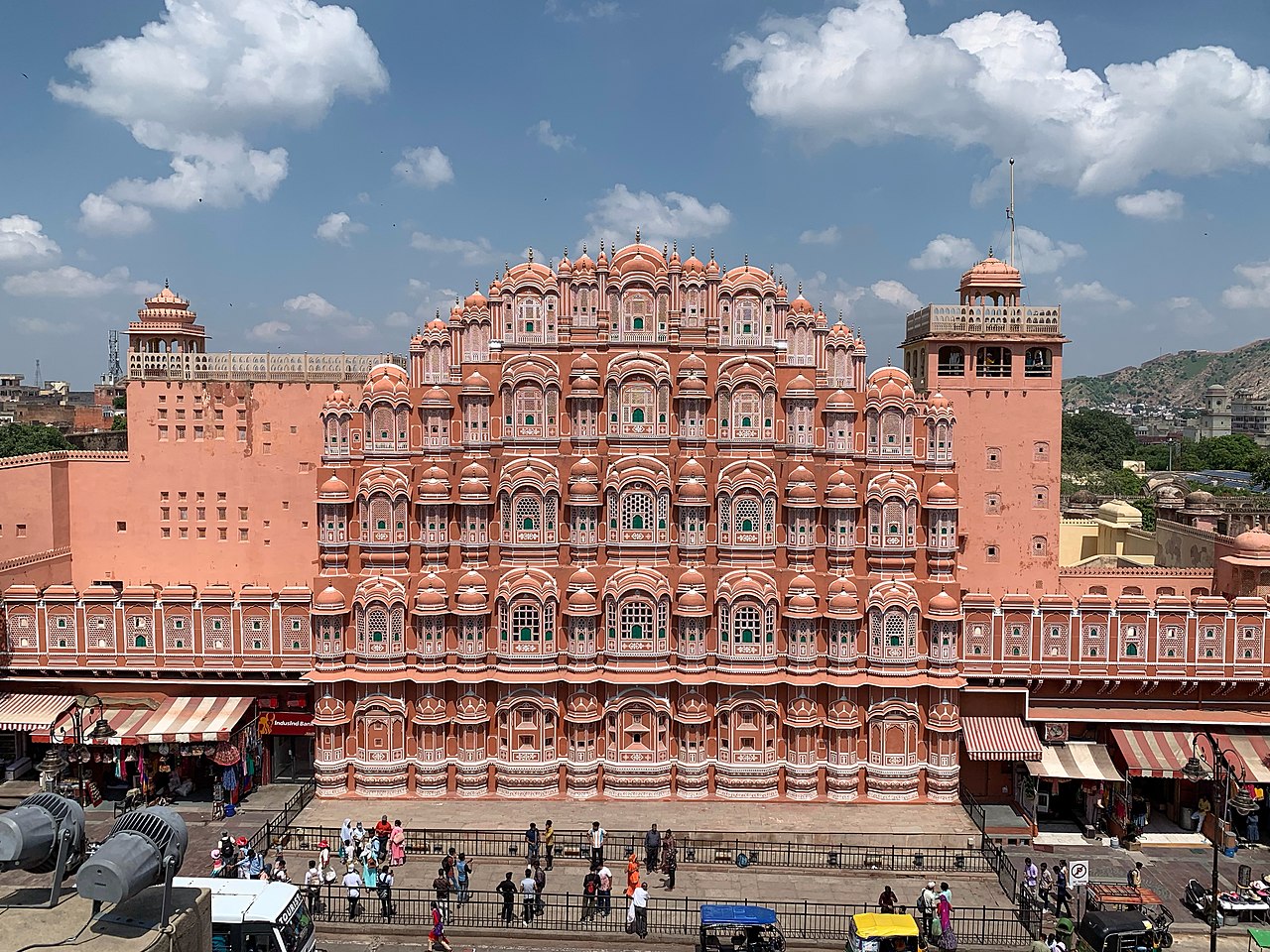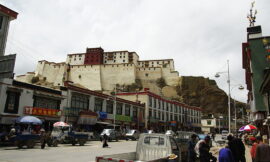Hawa Mahal, or the “Palace of Winds,” is a mesmerizing architectural gem located in the heart of Jaipur, the capital city of the Indian state of Rajasthan. This iconic structure stands as a testimony to the rich history and cultural heritage of the region, attracting visitors with its unique design and historical significance.
Built in 1799 by Maharaja Sawai Pratap Singh, the Hawa Mahal is a distinctive five-story palace made of pink sandstone. Its unique facade is adorned with intricate latticework and 953 small windows, known as jharokhas, which provide ventilation and allow the royal ladies to observe the bustling street life below without being seen. The name “Hawa Mahal” literally translates to the “Palace of Winds,” and the palace was designed to capture and channel the cool breezes, making it a comfortable retreat during the scorching summers of Rajasthan.
The architecture of Hawa Mahal is a stunning example of Rajputana style, characterized by its ornate decorations, domes, and arches. The honeycomb-like structure of the palace gives it a delicate and ethereal appearance, especially when the soft rays of the sun illuminate its intricate patterns during the morning and evening hours. The pink hue of the sandstone, a signature color of Jaipur, adds to the palace’s charm and seamlessly integrates it into the city’s vibrant landscape.
One of the fascinating aspects of Hawa Mahal is its strategic location in the heart of the Pink City. Situated on the edge of the City Palace, the palace allowed the women of the royal court to observe processions and events on the busy streets below without being visible to the public. This unique architectural feature served both functional and aesthetic purposes, providing ventilation and privacy to the women while showcasing the grandeur of the Rajput rulers.
The interior of Hawa Mahal consists of narrow passages, staircases, and small rooms, each offering a different perspective of the city. The palace doesn’t have a central courtyard but is designed like a honeycomb, with small chambers and windows on all sides. The top floor provides panoramic views of the City Palace, Jantar Mantar, and the bustling markets of Jaipur.
Hawa Mahal is not just an architectural marvel; it holds a significant place in the cultural narrative of Jaipur and Rajasthan. It has witnessed the grandeur of royal processions, the intrigues of court life, and the changing landscapes of the Pink City over the centuries. The palace stands as a silent witness to the rich history and cultural evolution of the region.
In recent times, Hawa Mahal has become one of the most visited tourist attractions in Jaipur, drawing history enthusiasts, architecture admirers, and curious travelers. The palace is beautifully illuminated in the evenings, creating a magical ambiance that further enhances its allure.
Jaipur, often referred to as the Pink City, is renowned for its architectural marvels, and Hawa Mahal is undoubtedly one of its crown jewels. It continues to be a symbol of Rajasthan’s royal legacy, architectural prowess, and the intricate fusion of art and functionality. As a living testament to the grandeur of the past, Hawa Mahal invites visitors to step into the pages of history and experience the regal splendor of Rajasthan.



